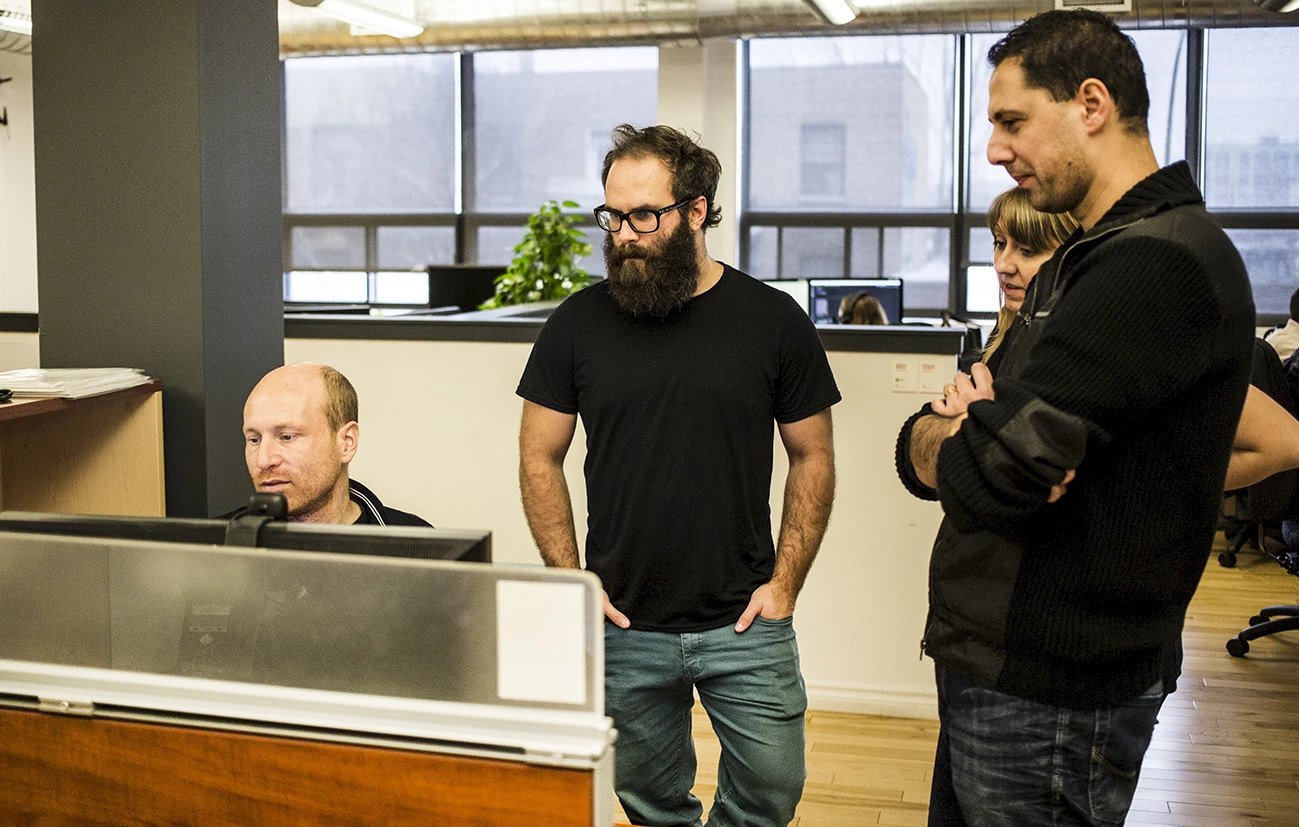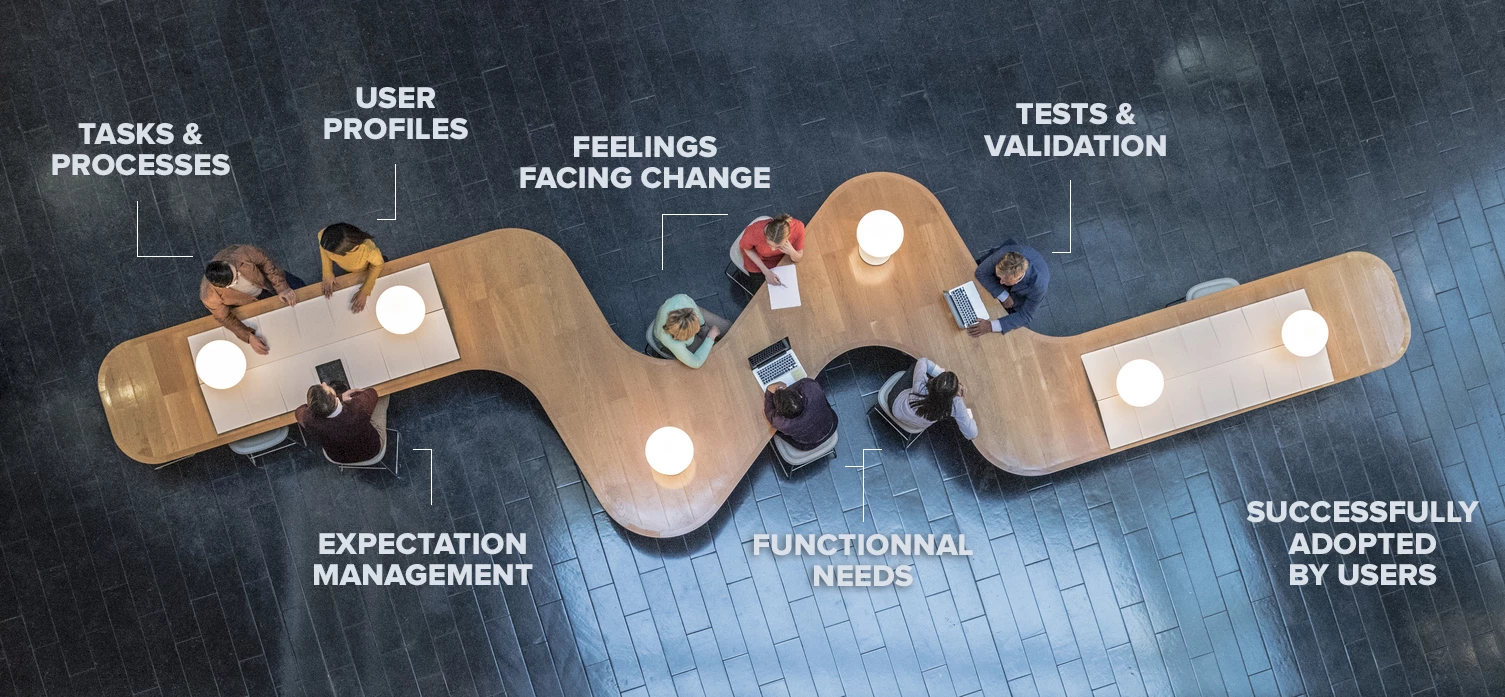How to optimize the adoption of the new version of a system

Users hate change. Especially pointless change that doesn’t make their lives any easier. They hate having to re-learn what they already know. The only changes that users accept are the ones that provide them with added value.
The only changes that users accept are the ones that they perceive will provide them with added value.
Here are five rules to start a software overhaul project on the right footing, and optimize its adoption by users.
- Don’t focus too much on training up the staff.
- Involve users throughout the process.
- Identify “evangelists” and support them.
- Prepare a communications plan to support your implementation plan.
- Foster a feeling of urgency for change. Give employees positive reasons to accept the changes.
In this article, I will focus on points 2 and 3, and on the benefits they can provide for your company.
Involve users throughout the process
Before the start of the project:
The first step starts before you even initiate development. Observe how users are using the current system. Make note of the following:
- User profiles (women, men, age, education, years’ experience).
- Tasks performed and steps undertaken with the software as well as with ancilliary tools developed in-house.
- Expectations from the new software.
- Feelings of users regarding the new software. Are they looking forward to it or dreading it?
Now, you have a better idea of users’ hopes, motivations and fears about the new software.
The main thing before launching into the development of any new software is to clearly identify the overall application processes: what can be taken out, what should be added in and what could be improved.
Ideally, you should involve an employee who spends a lot of their time working with the current software. If you also happen to have a super-user who knows the software inside-out, now is the time to call them in. Given the choice, go for users who are naturally open to change and possess leadership qualities. They will be your ambassadors with other users. The main thing before launching into the development of any new software is to clearly identify the overall application processes: what can be taken out, what should be added in and what could be improved.
At the beginning of the project:
The second step is to define your vision of the software and its key features.
You can ask your super-user to help you in prioritizing the development work. This will give you an indication of the most valuable features of the current system and avoid wasting money on features that aren’t actually used.

During development:
The third step is validation. At this point, you can validate the details of requested features and define clear expectations for each one.
Involve one or two users that are directly affected by the features being developed. They will be able to answer the more specific questions about the features in order to better define the work to be done, and confirm that the new solution is being correctly implemented, that your vision is accurate and that there are no bugs.
You may also want to involve your user rep. They can ensure that your work fits in with the overall vision of the project. They are your ally, enabling you to understand how every piece of the puzzle fits in the whole.
At the end of the project:
If user involvement proceeded as expected right from the beginning of the project and throughout development, the fourth and final step of the project should involve not much more than your users acting as ambassadors within the team for the new software.
Involving users: advantages for the company
Being able to count on users who are motivated and engaged in the success of the new software is a company’s best asset. Frustration management goes down, while satisfaction goes up!
The new software should better meet user needs and better help them do their work. Users, in turn, become more efficient and have more time for new tasks.
A well-thought-out application that was developed specifically for your company’s context is an intuitive application that reduces the burden of documentation and training.

We can help!
Not sure where to start with your new software user strategy? Our team of User Experience professionals can help you structure and plan your process. We can also act as outside consultants to undertake needs assessments and follow-up. Sometimes, users speak more freely to people from outside their company.

